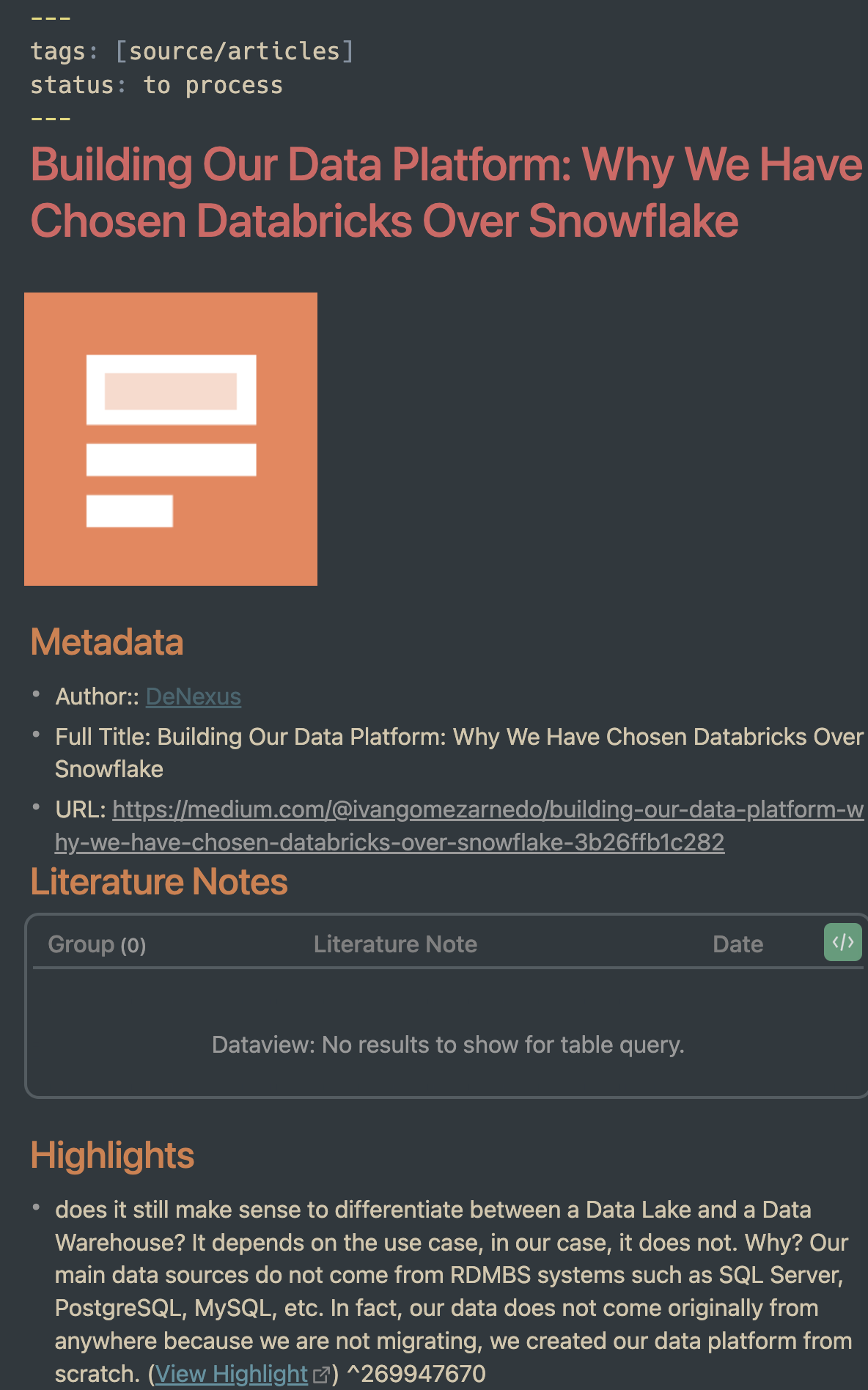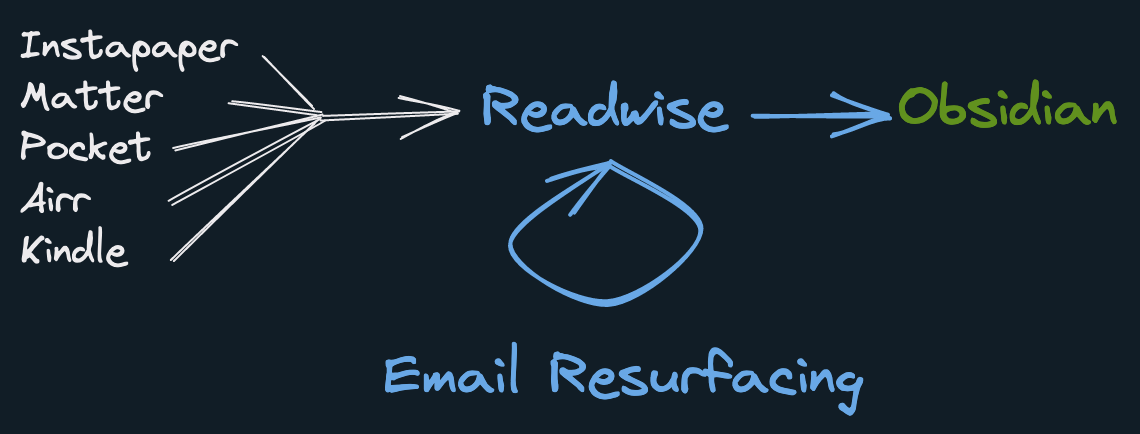My Information Operating System Part 2: Collecting

[!NOTE]
This is Part 2 of a 3-part series. You can find Part 1 here, and Part 3 here.
In Part 1 I covered the first, most crucial part of ingesting information: effective reading. In that article, you learned about:
- The four stages of reading
- Methods for highlighting important passages
- How to take powerful notes
In this second part, you will learn how to collect your highlights and notes in a single place for future processing.
However, this collecting stage isn’t just about getting all your highlights and notes in one place, but also about using them effectively. In this stage, you will:
- Collect your notes and highlights from all sources
- Make use of them by periodically reviewing them
- Prepare them for creating new knowledge and ideas
Readwise is the linchpin of this workflow and does all three steps for you automatically.
[!NOTE]
If you sign up with this link, you’ll get a 2-month free trial of Readwise, double the normal trial length.
For bringing in your highlights, it links to Instapaper, Kindle, GoodReads, and other services to automatically import your notes, keeping them together in Readwise for you. Now your notes aren’t scattered across all your sources but are neatly organized and ready for you to review.
Not only can you review them manually, but Readwise also sends you a daily email with a selection of your notes and highlights for you to review. Every morning, I do this, and having your notes resurfaced periodically over time becomes an engine that drives new ideas.
Here you won’t worry much about resurfacing for memorization because of what you’ll do as part of the last step of the Collecting stage: export to Obsidian, Roam, or your personal knowledge management tool of choice.
[!NOTE]
Since originally writing this, I have switched from Roam to Obsidian. The screenshots have been updated to reflect this, as has some of the language. Readwise works great with both tools, so this change won’t meaningfully change the techniques or information in this series of articles.
Obsidian is where everything ends up: it’s your second brain, your idea lab, your to-do list, your habit tracker, and much much more. If Readwise is the linchpin, then Obsidian is the wheel.
Readwise has an automatic export to Obsidian, and it is highly configurable. This is what a fresh export to Obsidian from Readwise looks like:

At the top, there are several attributes. The statuses consist of “to process,” “processing,” and “processed.” I’ll explain the headers in Part 3, but at the bottom, you’ll see one of the highlights brought in by Readwise. All of your highlights and notes will be nested under that header.
In the Readwise export configuration screen, you can define a template for your imports using Jinja templates. To use my template, grab the code for free below:
[!NOTE] You can also find the Roam template here.
Once you pick which existing saved articles you want to export and save your configuration, Readwise will begin exporting your selected articles to Roam, which will show up in your daily notes.
And now you’ve got an automatic collection and review system!

In this article, you learned how to use Readwise to:
- Collect all of your notes and highlights from different sources
- Periodically review your notes and highlights
- Prepare your notes and highlights to create new knowledge
Next, in Part 3, you will learn how to go from collecting your notes to connecting your notes. This process will allow you to find new inspirations, generate new ideas, and create new knowledge. See you then!